As you may know, I’ve spent this weekend at the Pittsburgh Knit and Crochet Festival… and I’ve been having a great time. I’ve learned a lot… but do you want to hear the most exciting thing I’ve learned all weekend?
I learned a super-awesome new way to wear a long scarf!
If you’re like me (well, at least the me a few days ago), your standard way to manage a long scarf is to fold it in half, and tuck the ends through the loop. Easy, but leaves a giant bulge around your neck. But, Steven Be, fiber stylist extraordinaire, taught me a new way to wear a long scarf! Squee! And I’m so excited about sharing it with you that I took photos of how to do it in the hotel lobby!
Super-stylish way to wrap a long scarf
First, fold your scarf in half:
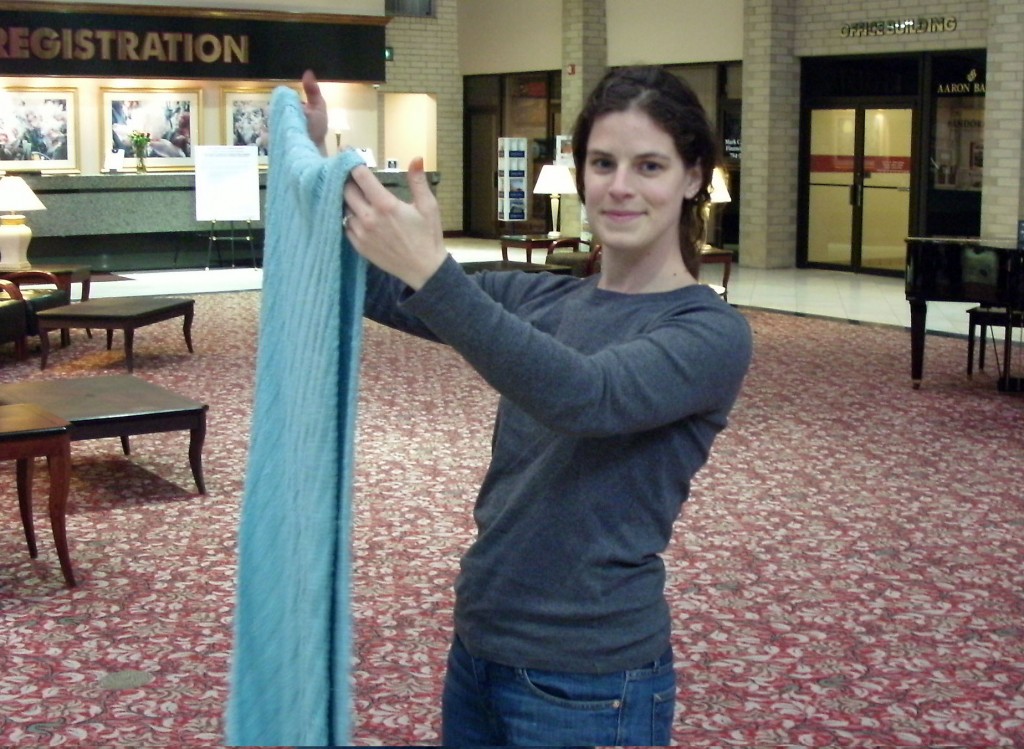
And then put it around your neck (so far… just like the old way!)
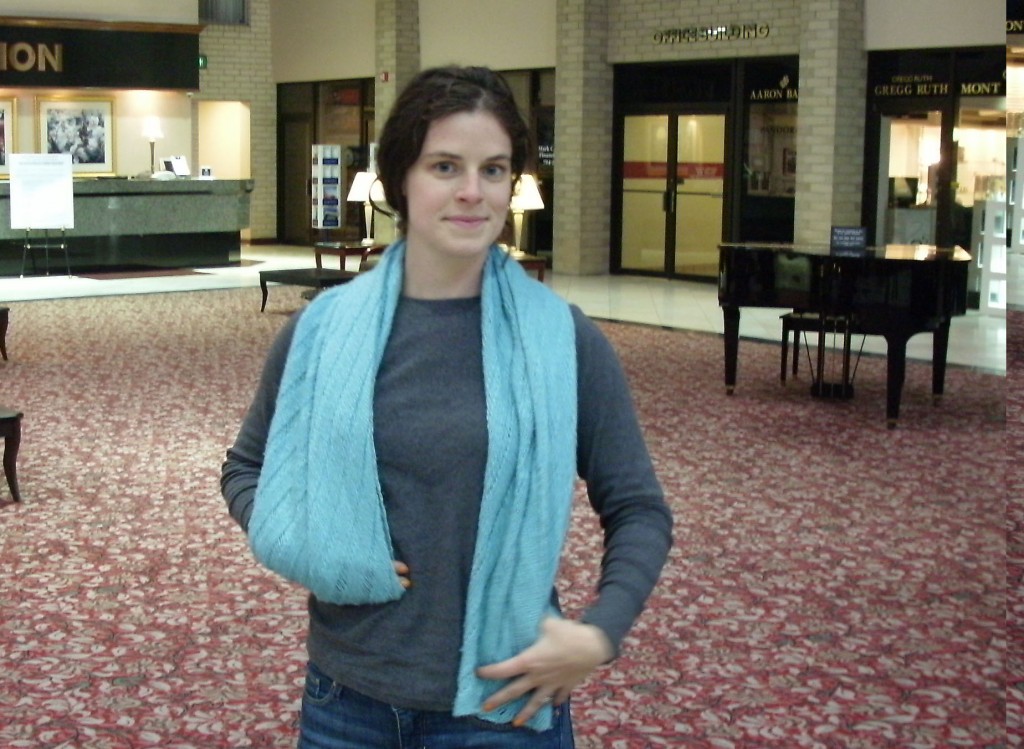
Now, here’s where it gets new! Pull only one tail through the loop:
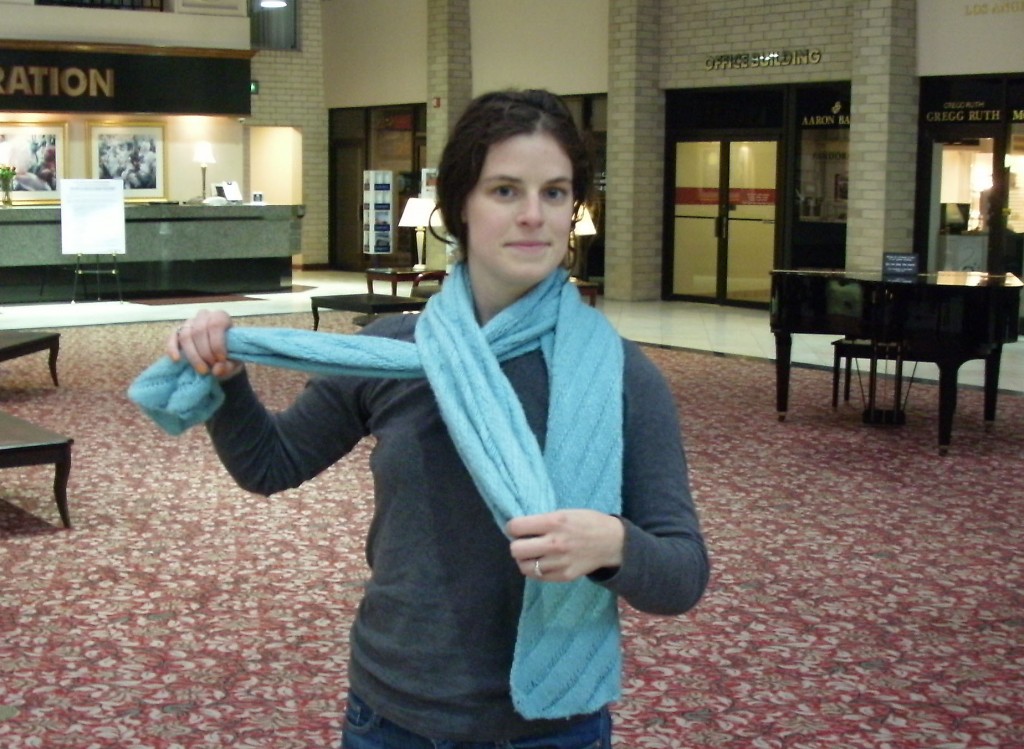
Now, scoot that tail up a bit, and twist the loop once. The first tail should be above the twist. Pull the second tail through the loop you’ve just twisted:
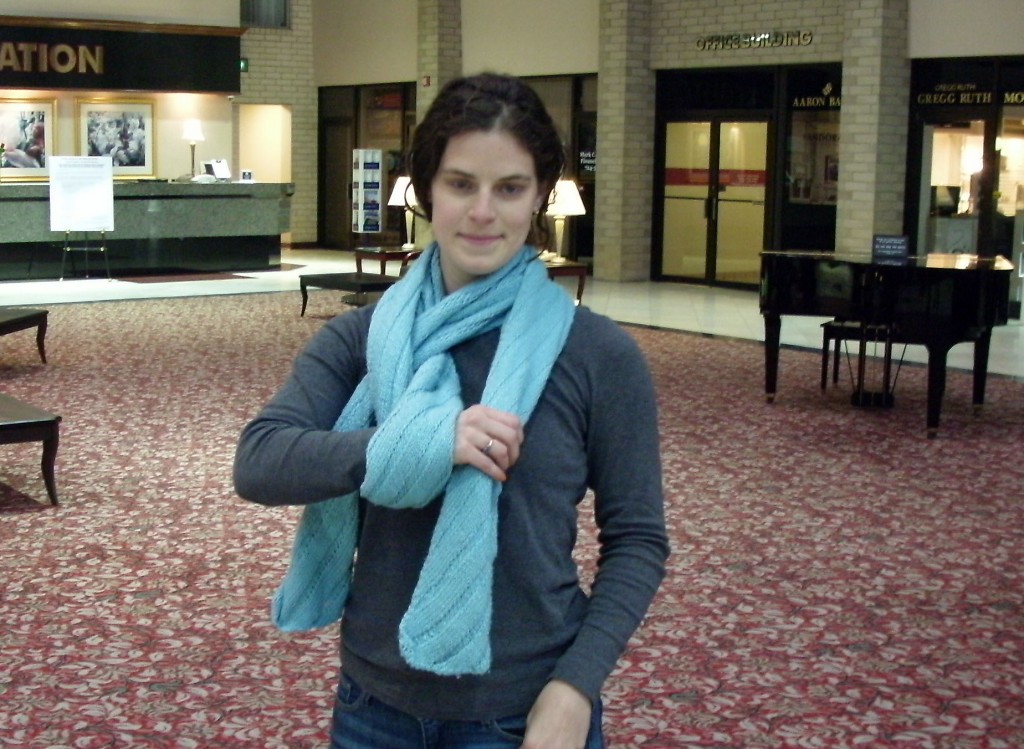
Pull it all snug… and ta-da!
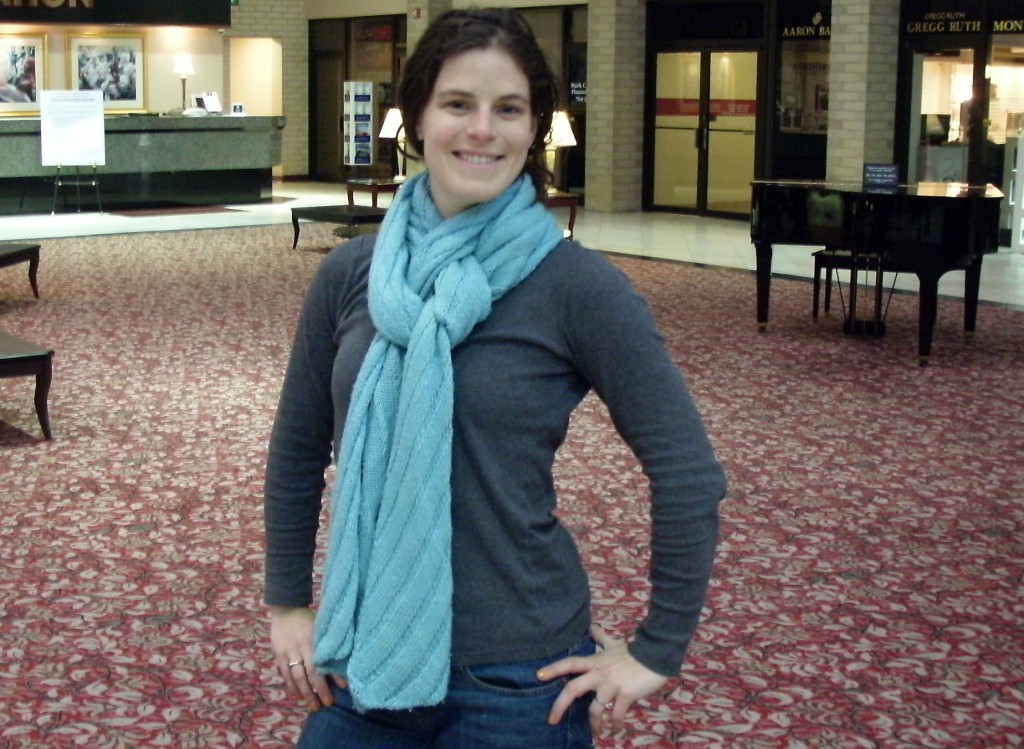
It looks like an awesomely-intricate knot… and lies really nice and flat. Look how nicely it fits under my coat:
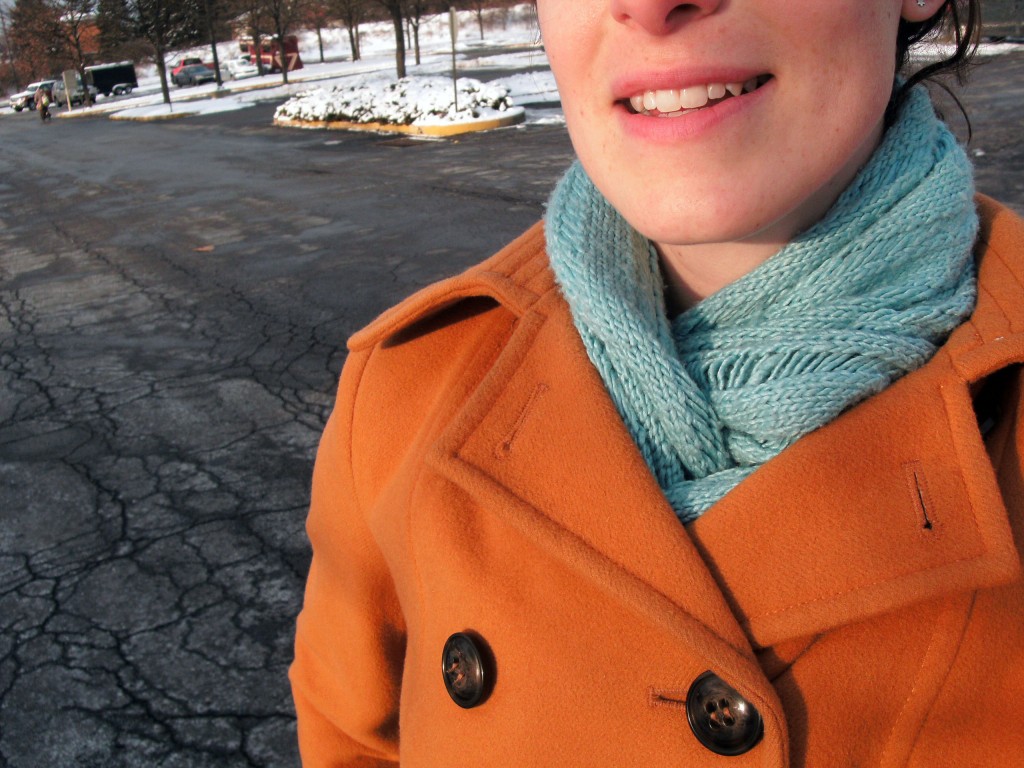
Hooray! I’m wearing my scarf like this every day!
Do you have any cool ways of wrapping a scarf to share?










